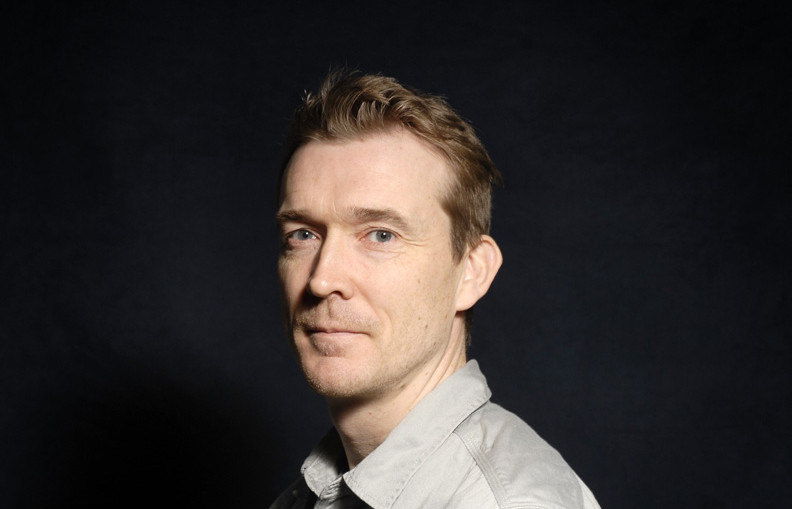Эпоха пропаганды - Эллиот Аронсон
Книгу Эпоха пропаганды - Эллиот Аронсон читаем онлайн бесплатно полную версию! Чтобы начать читать не надо регистрации. Напомним, что читать онлайн вы можете не только на компьютере, но и на андроид (Android), iPhone и iPad. Приятного чтения!
Шрифт:
Интервал:
Закладка:
282
Freeman, E. (1937). Social psychology. New York: Holt, Rinehart & Winston, especially pp. 263–266; Zimbardo, P. G., Ebbesen, E., & Maslach, C. (1977). Influencing attitudes and changing behavior. Reading, MA: Addison-Wesley.
283
For related examples, see Freeman (1937), note 2; Luchins, A. S., & Luchins, E. H. (1978). Revisiting Wertheimer’s seminars (Vol. 1). Lewisburg, PA: Bucknell University Press, p. 277.
284
Knupfer, N. N., & Hayes, P. (1994). The effects of the Channel One broadcast on students’ knowledge of current events. In A. De Vaney (Ed.), Watching Channel One (pp. 42–60). Albany: State University of New York Press. For a general discussion of Channel One, see De Vaney, A. (Ed.). (1994). Watching Channel One. Albany: State University of New York Press.
285
Vallone, R. P., Ross, L., & Lepper, M. R. (1985). The hostile media phenomenon: Biased perception and perceptions of media bias in coverage of the Beirut massacre. Journal of Personality and Social Psychology, 49, 577–585. Это — пример более общей тенденции использовать аттитюды как эвристику в решении проблемы; см.: Pratkanis, A. R. (1988). The attitude heuristic and selective fact identification. British Journal of Social Psychology, 27, 257–263; Pratkanis, A. R., & Greenwald, A. G. (1989). A socio-cognitive model of attitude structure and function. In L. Berkowitz (Ed.), Advances in experimental social psychology (Vol. 22, pp. 245–295). New York: Academic Press.
286
Comstock, G. (1980). Television in America. Beverly Hills, CA: Sage.
287
Fallows, J. (1997). Breaking the news. New York: Vintage.
288
См.: Luchins & Luchins (1978), прим. 3.
289
Maier, N. R. F. (1952). Principles of human relations. New York: Wiley; Maier, N. R. F. (1963). Problem-solving discussions and conferences. New York: McGraw-Hill.
290
Turner, M. E., & Pratkanis, A. R. (1994). Social identity maintenance prescriptions for preventing groupdiink: Reducing identity protection and enhancing intellectual conflict. International Journal of Conflict Management, 5, 254–270; Turner, M. E., & Pratkanis, A. R. (1997). Mitigating groupthink by stimulating constructive conflict. In C. K. W. De Dreu & E. Van de Vliert (Eds.), Using conflict in organizations (pp. 53–71). Thousand Oaks, CA: Sage; Turner, M. E., & Pratkanis, A. R. (1996). Mitigating the negative consequences of groupthink: Further implications of a social identity maintenance model. Unpublished manuscript, San Jose State University.
291
Lippmann, W. (1922). Public opinion. New York: Harcourt, Brace.
292
Hale, O. J. (1964). The captive press in the Third Reich. Princeton, NJ: Princeton University Press.
293
Benn, D. W. (1989). Persuasion and Soviet politics. New York: Blackwell; Mickiewicz, E. (1988). Split signals. New York: Oxford University Press; Roxburgh, A. (1987). Pravda: Inside the Soviet news machine. New York: Braziller.
294
Steele, R. W. (1985). Propaganda in an open society: The Roosevelt administration and the media, 1933–1941. Westport, CT: Greenwood.
295
DeParle, J. (1991, May 6). Keeping the news in step. Are the Pentagon’s Gulf War rules here to stay? New York Times, p. A9.
296
Fishman, M. (1980). Manufacturing the news. Austin: University of Texas Press; Fallows, J. (1997). Breaking the news. New York: Vintage; Gans, H. J. (1979). Deciding what’s news. New York: Vintage; Jamieson, K. H., & Campbell, K. K. (1992). The interplay of influence. Belmont, CA: Wadsworth; Kaniss, P. (1991). Making local news. Chicago: University of Chicago Press; Nelkin, D. (1987). Selling science. New York: Freeman; Pratkanis, A. R. (1997). The social psychology of mass communications: An American perspective. In D. F. Halpern & A. Voiskounsky (Eds.), States of mind: American and post-Soviet perspectives on contemporary issues in psychology (pp. 126–159). New York: Oxford University Press; Tuchman, G. (1978). Making news. New York: Free Press.
297
Sigal, L. V. (1973). Reporters and officials: The organization and politics of newsmaking. Lexington, MA: Heath.
298
Croteau, D., & Hoynes, W. (1994). By invitation only. Monroe, ME: Common Courage.
299
Bagdikian, B. H. (1992). The media monopoly. Boston: Beacon. Фигуры монополистов средств массовой коммуникации могут устареть прежде, чем вы о них прочитаете, — объединения происходят с поразительной скоростью. Дополнительную информацию см.: Brill, S. (2000, April). The mega threat. Brill’s Content, pp. 23, 26–27; Rosenwein, R. (2000, January). Why media mergers matter. Brill’s Content, pp. 92–95.
300
Mark Levy, quoted in Time, October 1, 1979, p. 83. See also Bogart, L. (1995). Commercial culture. New York: Oxford University Press; Rubin, A. M. (1994). Media uses and effects: A uses-and-gratifications perspective. In J. Bryant & D. Zillman (Eds.), Media effects. Hillsdale, NJ: Erlbaum.
301
Ernst, S. W. (1972). Baseball or brickbats: A content analysis of community development. Journalism Quarterly, 49, 86–90.
302
Koppel, T, & Gibson, K. (1996). Nightline. New York: Random House, p. 230.
303
Mann, P., & Iscoe, I. (1971). Mass behavior and community organization: Reflections on a peaceful demonstration. American Psychologist, 26, 108–113. For other examples of how eyewitness reports differ from news accounts, see Dershowitz, A.
Прочитали книгу? Предлагаем вам поделится своим отзывом от прочитанного(прослушанного)! Ваш отзыв будет полезен читателям, которые еще только собираются познакомиться с произведением.
Уважаемые читатели, слушатели и просто посетители нашей библиотеки! Просим Вас придерживаться определенных правил при комментировании литературных произведений.
- 1. Просьба отказаться от дискриминационных высказываний. Мы защищаем право наших читателей свободно выражать свою точку зрения. Вместе с тем мы не терпим агрессии. На сайте запрещено оставлять комментарий, который содержит унизительные высказывания или призывы к насилию по отношению к отдельным лицам или группам людей на основании их расы, этнического происхождения, вероисповедания, недееспособности, пола, возраста, статуса ветерана, касты или сексуальной ориентации.
- 2. Просьба отказаться от оскорблений, угроз и запугиваний.
- 3. Просьба отказаться от нецензурной лексики.
- 4. Просьба вести себя максимально корректно как по отношению к авторам, так и по отношению к другим читателям и их комментариям.
Надеемся на Ваше понимание и благоразумие. С уважением, администратор knigkindom.ru.
Оставить комментарий
-
 машаМ13 декабрь 06:46
В целом неплохо хотя очень мало динамики.лишь конец романа был очень волнующим....
Оставь для меня последний танец - Мэри Хиггинс Кларк
машаМ13 декабрь 06:46
В целом неплохо хотя очень мало динамики.лишь конец романа был очень волнующим....
Оставь для меня последний танец - Мэри Хиггинс Кларк
-
 Гость Анна12 декабрь 20:33
Не советую, скучновато, стандартно...
История «не»мощной графини - Юлия Зимина
Гость Анна12 декабрь 20:33
Не советую, скучновато, стандартно...
История «не»мощной графини - Юлия Зимина
-
 Гость Наталья10 декабрь 21:32
Книга прекрасная! Удовольствие получила просто нереальное! Здесь есть всё: запоминающиеся герои, приключения и, конечно, любовь!...
Единственная для оборотня и теща в нагрузку - Франциска Вудворт
Гость Наталья10 декабрь 21:32
Книга прекрасная! Удовольствие получила просто нереальное! Здесь есть всё: запоминающиеся герои, приключения и, конечно, любовь!...
Единственная для оборотня и теща в нагрузку - Франциска Вудворт










